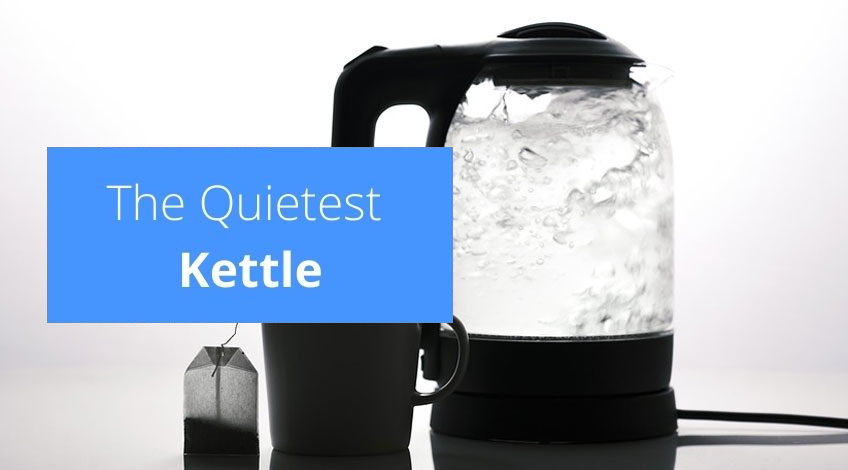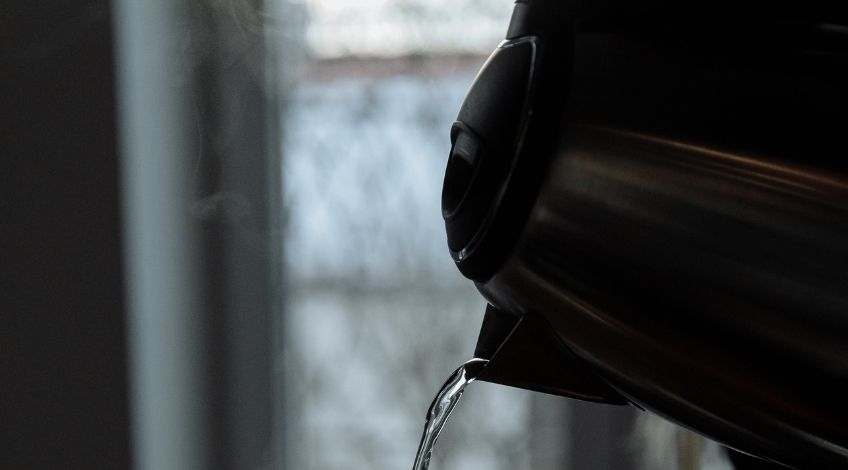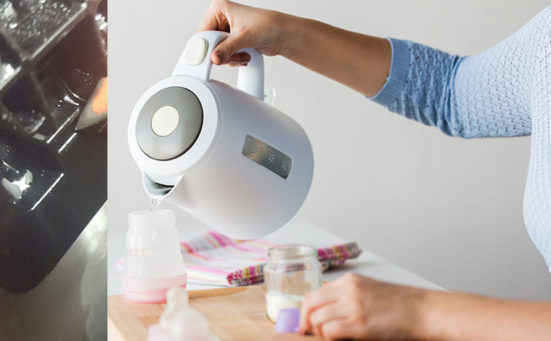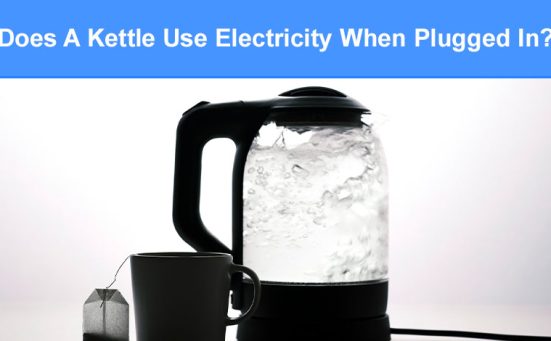
What Is The Quietest Kettle?
If you like to start your day with a nice, relaxing cup of tea whilst listening to the world go by, a quiet kitchen could be something you need. Let’s face it most electric kettles are quieter than the old fashioned whistling stove top kettles from years ago. But electric kettles can be loud, some create as much noise as an electric drill.
If you happen to live in an open plan home, it’s difficult to escape the noise from the kettle as it heats up the water for your first cuppa of the day. Plus, if anyone else hears the kettle boiling they’re more likely to get up and disturb your peace completely. So is there such a thing as a quiet kettle? If so, what makes them quiet? And what do they consider to be a quiet level for a kettle?
Popular Quiet Kettles
- Energe Efficient: Save up to 66% energy by just boiling one cup (250 ml) that you needed vs 1 Litre; UK Standard with a 3-pin UK plug
- Illuminating Indicator: This blue LED indicator lets you know the water is heating, making it easy to boil water even in a dark kitchen
What Causes Electric Kettles To Be Noisy?
If we can understand why a kettle makes a noise maybe that will help to explain if it’s possible to get a quiet kettle. We need to get a bit technical to explain how a kettle heats water, but we’ll keep it as short and as simple as we can.
How Does An Electric Kettle Boil Water?
In basic terms, the electric kettle consists of a heating element located at the bottom of the kettle, a container for water and an electrical power supply. We know how it works, you plug the kettle into the power supply, fill with water, turn it on and wait for it to boil. Here comes the technical bit.
When water is heated it expands, if it expands enough, it changes from a liquid to a gas (water to steam). Hot water has a lower density than cold water, this means it will float to the top. As the heating element is in the bottom of the kettle, the lowest part of the water heats up first. This hot water rises through the colder water losing heat as it travels, and shrinking back to its original size.
This creates a pocket of empty space in the water, which is known as cavitation. The pocket gets filled with water and that’s the bonking noise you hear when the kettle is working. The next time you boil a kettle, listen to it, you’ll notice the bonking lessens the closer to boiling the kettle is.
That’s because as more of the water becomes hot, there’s less cavitation, so less noise. The whole body of water heats up and steam forms which activates the thermostat and turns the kettle off.
How Loud Is An Electric Kettle?

According to a recent scientific survey after studying many kettles they came up with the following figures. The loudest kettle had a score of 95 decibels, and the quietest was 79 decibels. Look at the following chart for an idea of just how loud that is.
| Object | Loudness in decibels |
|---|---|
| Normal breathing | 10 Decibels |
| Rainfall | 50 Decibels |
| Normal conversation | 60 to 65 Decibels |
| Washing machine | 70 Decibels |
| Vacuum cleaner | 83 Decibels |
| Electric lawn mower | 90 Decibels |
| Electric drill | 95 Decibels |
| Fireworks | 150 Decibels |
| Shotgun blast | 170 Decibels |
Leading health authorities state that constant exposure to 85 Decibels or more can lead to permanent hearing loss. Something to think about when making your next cup of tea.
How Do They Make Electric Kettles Quieter?
Electric kettles designers have gone some way to creating quieter kettles, by increasing the size of the heating element. A larger heating element spreads the heat more evenly creating a more even temperature rise. This in turn reduces cavitation – Less cavitation = less noise.
Another design technique used to reduce the noise level of a boiling electric kettle is coating the outside with a soundproof coating, this reduces the noise level we hear without actually changing the way the kettle operates.Some have gone for a double wall construction and a tighter fitting lid.
With all of these sound dampening kettles there is a price to pay, the purchase price is more, and as they have larger heating elements the power consumption is higher too (usually 3 kW). They cost on average around £30 to £60 whereas a standard electric kettle costs from around £8 to around £20 depending on make and model. The cheaper kettles tend to have lower wattage too which means they are cheaper to use as they consume less power. However the quieter models tend to boil faster so it counteracts the extra cost and power level with less time to boil.
How Quiet Is A Quiet Kettle?
Having trawled through many technical charts, from various kettle manufacturers we have found some kettle manufacturers that claim to have made kettles that produce just 50 Decibels when boiling. If you look at the chart above you’ll see that it’s around the level of sound you’d expect to hear when rain is falling. That’s half as much as the loudest kettles on the market and ⅓ lower than the lowest standard kettle available.
The drawback as we said earlier is the price and the time taken to boil. It might be quiet but it takes around twice as long to boil as a standard “noisy” kettle. So to summarise, it is possible to get a quiet kettle but it’s a trade off between price, energy usage, speed or quiet. We’ll leave that choice up to you.
How To Make A Standard Electric Kettle Quieter
If you decide you’re perfectly happy with your existing kettle, but would like it to be quieter, there are a few tricks you can employ to make your kettle less noisy. Obviously you can’t change the physics or chemistry of how water boils, but you can reduce the level of sound. Ways to reduce the sound include:
- Use A Rubber Sound Dampener Mat
Any rubber mat, like the ones used in the footwell of a car, can be cut, and shaped to fit underneath your kettle. The rubber will absorb some of the noise created by water cavitation. Making the kettle sound quieter. - Use A Towel To Dampen The Sound
Place a towel under the kettle, the thicker it is the less sound will escape from the base of the kettle. - Use A Tea Cosy On The Kettle
Cover the kettle with a tea cosy, not only will it dampen the noise levels, it will also keep the water hotter longer once it’s boiled. You can get tea cosies in all shapes and sizes, there will definitely be one that fits your kettle. Plus they also come in many colours and designs so it won’t be too difficult to find one that matches your decor. - Descale The Kettle
Limescale build-up means the kettle will take longer to boil. Because limescale on the bottom of the kettle prevents heat from entering, the water takes longer to boil. If you keep limescale down you keep the noise level down too.
Frequently Asked Questions
The quietest electric kettle has a noise level of just 50 decibels which is the equivalent of the sound of rainfall.
The decibel levels for a kettle boiling range from 79 decibels to 95 decibels, apart from a quiet kettle which has a level of 50 decibels.
There is no such thing as a silent kettle, but there are some that claim to be 70% quieter than standard kettles.
Boiling water does make noise due to cavitation. This is where hot water rises through cold water leaving a space, which water rushes into and it’s this that makes that bonking sound when a kettle is boiling.





